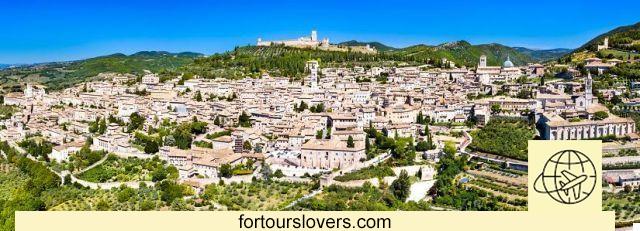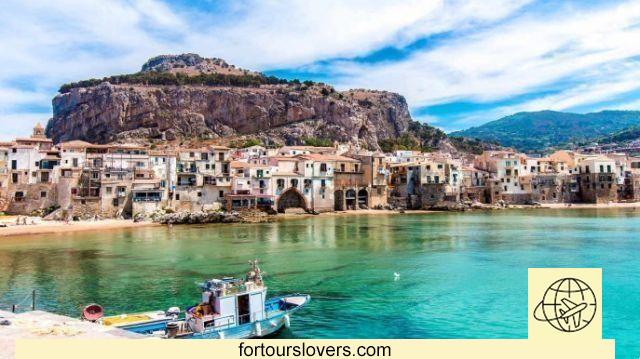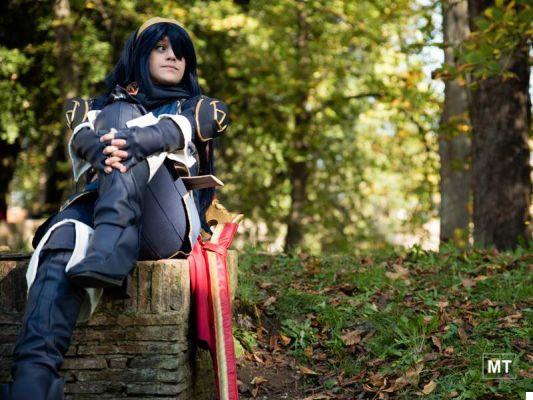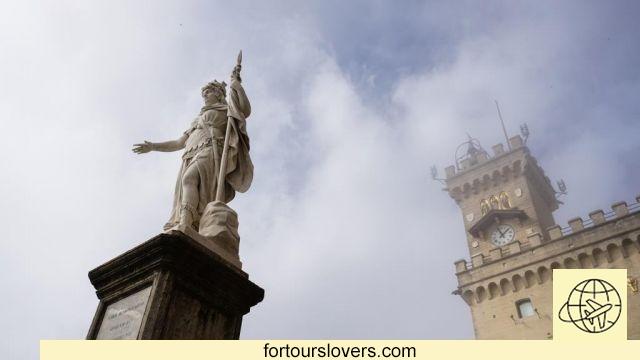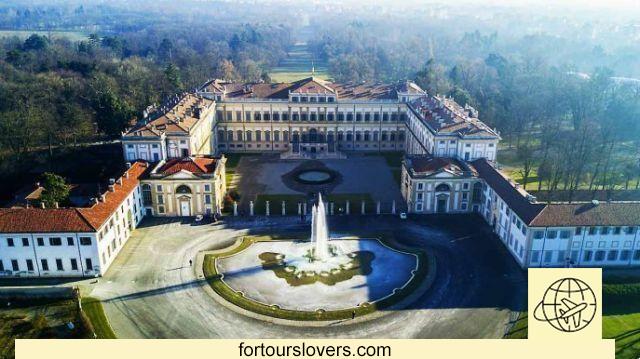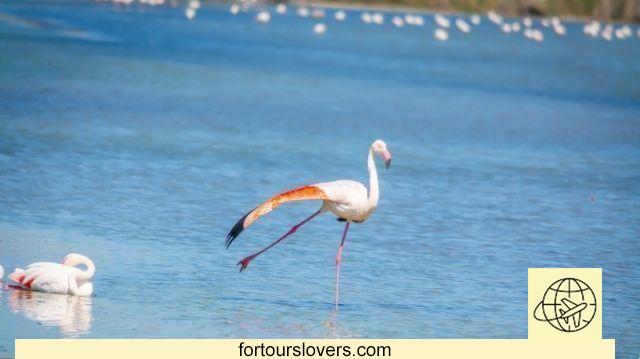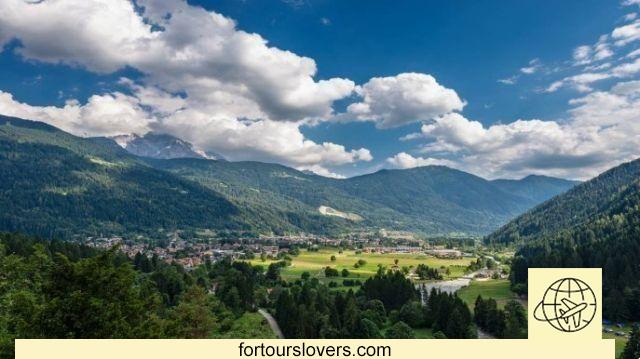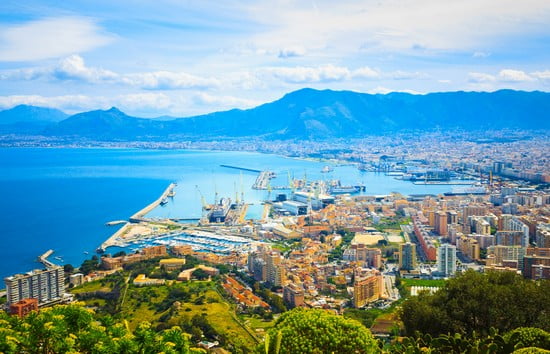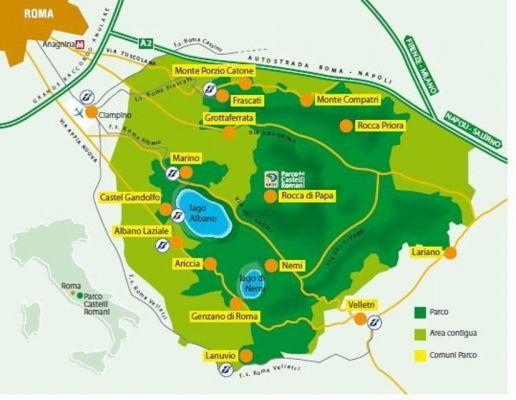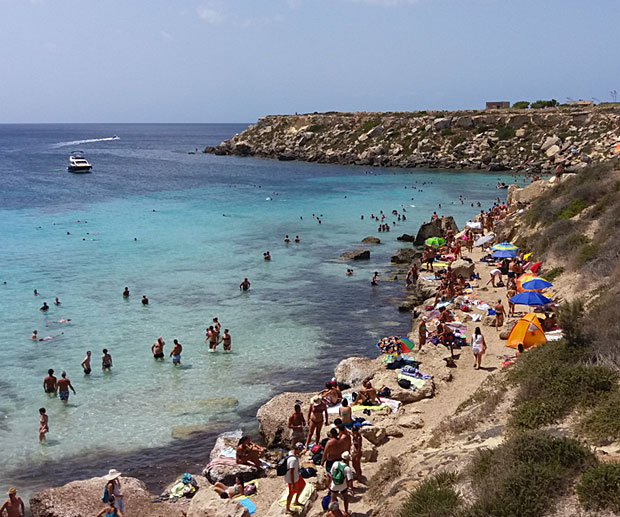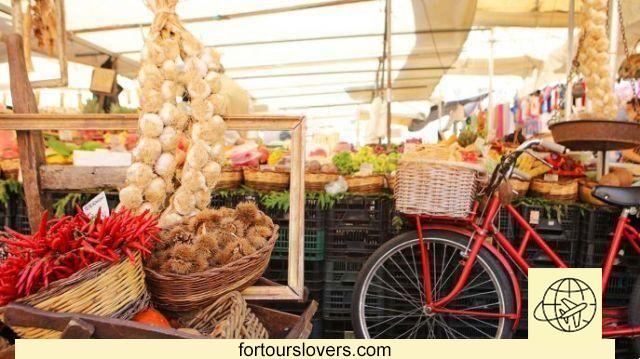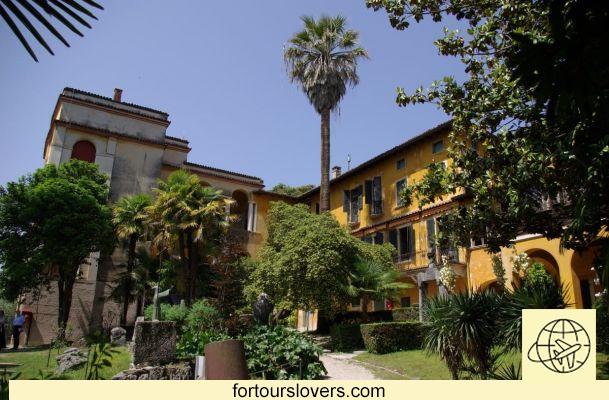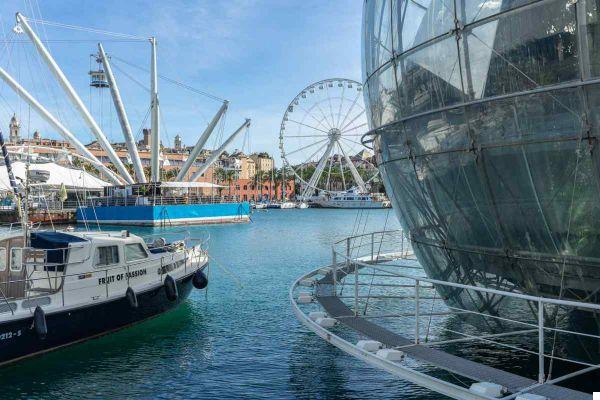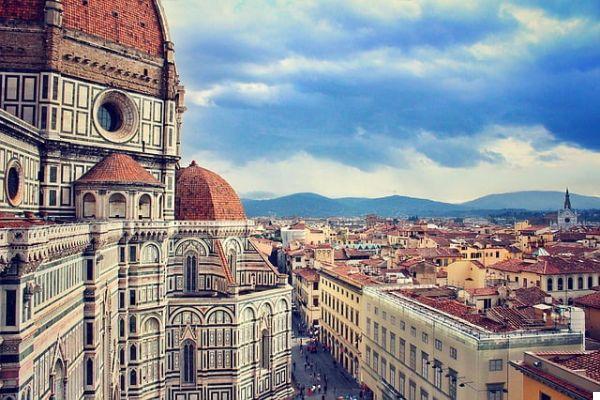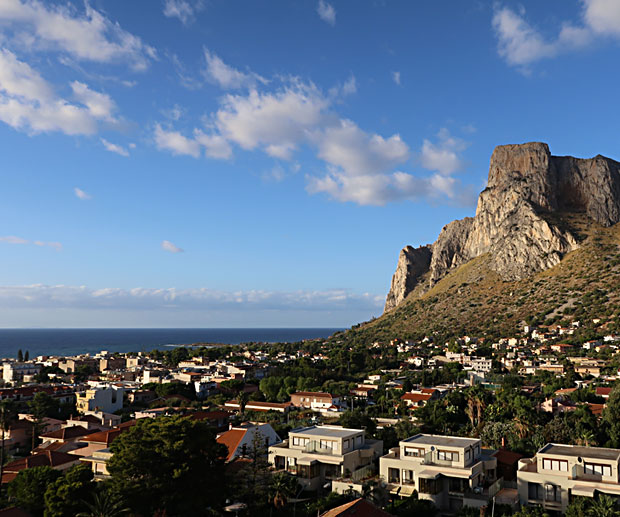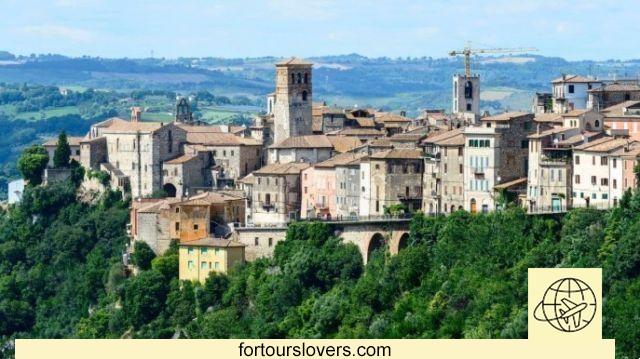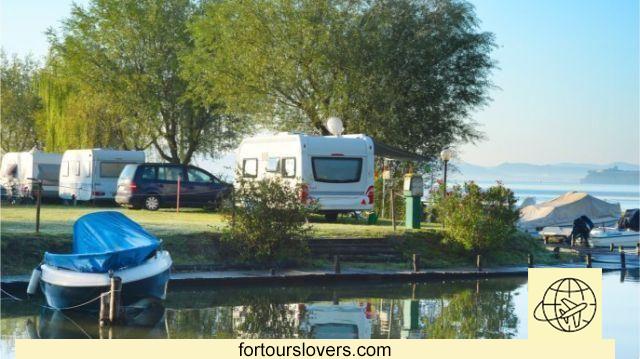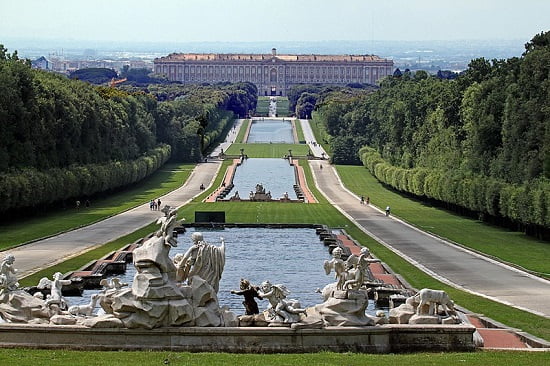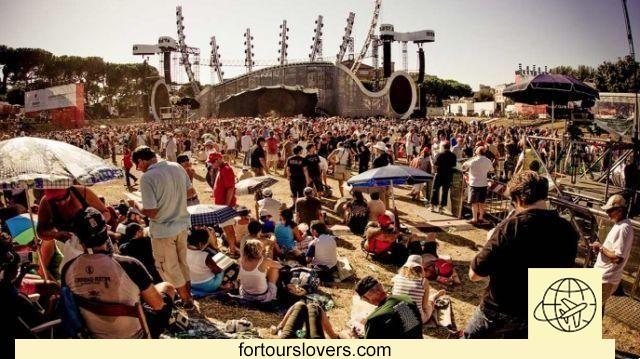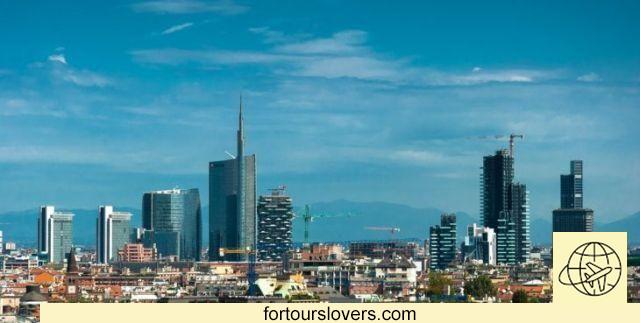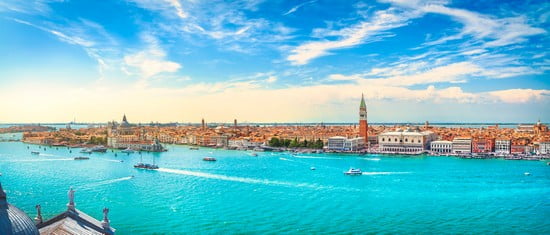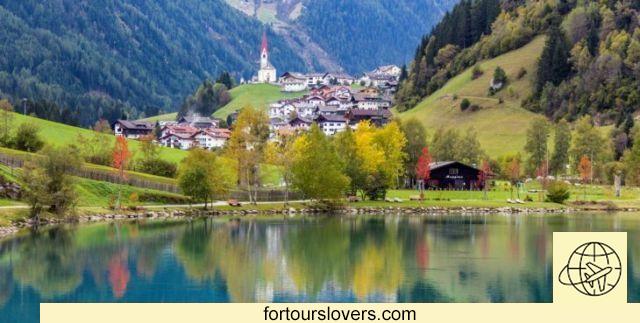
The Dolomites
14 things to do and see in the Dolomites and 3 not to doThere is a joke that perfectly describes the magic of the Dolomites: "only the sea is missing". Which then, is not entirely true, since one of the reasons that pushed theUNESCO international convention against doping in the sport to include them among the World Heritage assets, it is precisely because from a geological point of view they provide "a cross-section of marine life in the Triassic period, in the aftermath of the greatest extinction ever recorded in the history of life on Earth" (Seville Declaration, 26 June 2009). In short, millions of years ago there was also the sea, while today there are snow-capped peaks, woods, valleys and an infinite number of traditions common to the populations who live close to them. 9 mountain systems that extend between 2 nations (Italy and Austria), 3 regions (Veneto, Trentino Alto Adige and Friuli Venezia Giulia) and 5 provinces (Belluno, Bolzano, Trento, Pordenone and Udine). But at the base of the UNESCO recognition there are not only the landscape-environmental aspects. In the report of the Executive Committee on the Material Heritage of Humanity, the management and promotional aspects that are fundamental in the tourist success of the territory were also highlighted. We are speaking, in fact, of places that live off tourism practically all year round, without being upset by it. In other words, tourism enhancement goes hand in hand with environmental protection, triggering a virtuous process that ensures well-being and quality of life for the populations involved. Below we see together the main tourist attractions of the Dolomites, with the warning that it is necessarily a partial list, however useful for a first approach to such beautiful places. Happy reading.
1 Madonna di Campiglio
Our story of the things to do and see in the Dolomites can only start from Madonna di Campiglio, a world famous ski resort set at 1500 meters above sea level between the peaks of the Brenta (Trentino Dolomites) and the Adamello and Presanella glaciers. Most of the hotels in the area are concentrated in this village of about a thousand inhabitants in the province of Trento. The tourist appeal of the locality, in fact, dates back to the mid-nineteenth century and in over a century of activity it has been able to renew itself up to the complete seasonal adjustment. Yes, why You don't come to Madonna di Campiglio only in winter, and you don't just come to ski. Of course, 150 kilometers of interconnected slopes represent a dream for all lovers of alpine and cross-country skiing, but there is more. To be precise, dozens and dozens of hiking trails able to satisfy trekking lovers: from the most expert and demanding ones who move at high altitude between one refuge and another; to those who want to walk in nature without tackling particularly demanding routes. And, of course, the itineraries are structured according to each one's aptitudes. To get an idea of the variety available, especially in the spring and summer months, you can consult the website: www.dolomitibrentatrek.it. There is a stage, however, that is worth a visit regardless of physical condition, experience and level of preparation. Let's talk about the Lake of Tovel, if desired, also reachable by car. It is a spectacular alpine lake, located at almost 1200 meters above sea level in the Adamello Brenta Natural Park. In addition to the emerald green color of the waters and the autumn foliage of the surrounding woods, the fame of Tovel is linked to a phenomenon that, it must be said, has not occurred for several years: the significant reddening of a part of the its banks due to the flowering ofalga Tovellia sanguinea. Redness or not, Lake Tovel is absolutely worth a visit. Not to be missed!
2 Pinzolo
Just over 10 kilometers from Madonna di Campiglio is Pinzolo, another well-known tourist resort in the Brenta Dolomites. It must be said that the tourist fortunes of Pinzolo are much more recent than in Madonna di Campiglio. Only in the 60s of the last century did the construction of parks, tennis courts, football, golf and, obviously, ski slopes, significantly improve the living conditions of the inhabitants. Therefore not only winter tourism but also summer, the latter facilitated by the fact that several Serie A football teams (among others Juve, Inter and Rome) choose the location to make the pre-season retreat. Despite the tourist exploit, however, the territory continues to be linked to its own traditions and cultural symbols. One of the most important, if not the most important, is the Church of San Vigilio (the first nucleus of the building would even be prior to the year XNUMX). The fame of this church is mainly due to paintings by Simone Il Baschenis. In particular, the "Macabre Dance" (see photo) painted on the south facade of the building (the other wall paintings depict "The Seven Deadly Sins" and "The Resurrection of Christ"). These are representations of the sixteenth century very useful, from a historical point of view, to deepen the medieval spirituality with its constant call to asceticism and the inevitability of death. Therefore, Pinzolo offers not only landscapes, nature and entertainment, but also history, culture and traditions, it goes without saying for those who want to deepen the genius loci of the territory.
3 Trento
Having spoken of the small church of San Vigilio in Pinzolo, one cannot avoid visiting the capital Trento. The reason is that the city cathedral, a wonderful XNUMXth century Romanesque building, is dedicated to the saint in question who, among other things, is also the patron saint of the city. The kilometers that separate the two towns are about seventy, easily covered both by car and by public transport. The circumstance demonstrates two things: the first is that a holiday in Madonna di Campiglio or Pinzolo can very well contemplate a stop in Trento. The second, in return, is that staying in Trento allows you to easily reach the Brenta Dolomites whose landscapes become an opportunity for a day trip. Whatever the choices, Trento is undoubtedly worth a visit. Not only for the Cathedral, but also for everything around it: from the historic Castello del Buonconsiglio to Muse, the Science Museum designed by Renzo Piano and inaugurated in 2013. It is located just 10 minutes walk from Piazza del Duomo and is an avant-garde building both in terms of architecture (see photo) and for the contents offered. To be seen!
For more information about the city
11 things to do and see in Trento and 1 not to do
4 Val di Fassa
The distance that separates Trento and Val di Fassa is roughly the same as that between the provincial capital and the Brenta Dolomites. Therefore, what has already been said previously applies: you can choose to dedicate a day of your holiday to Pozza di Fassa, Vigo di Fassa, Canazei, etc. to discover Trento or, on the contrary, base yourself in the city and then move to one of the aforementioned locations. It depends a lot on the time of year and the type of holiday: if, in short, you come for skiing or trekking on the Marmolada. But as we have been trying to say from the beginning, the Dolomites also deserve from a historical-cultural point of view. For example, you need to know that in Val di Fassa, as well as in Val Gardena and Val Badia, Ladin is spoken, an Alpine language recognized in Italy with the status of minority language and therefore present in road signs as well as, of course, being taught in schools. There is also a dedicated museum and definitely worth a visit. For more information see the Official site: www.istladin.net.
5 Val di Fiemme
Val di Fiemme is the natural continuation of Val di Fassa. The kilometers that separate Trento and Cavalese (the most important center of the valley together with Predazzo) are about 60, which is why the same advice given previously on the advisability of commuting from the capital to the valley or vice versa apply. Cavalese's fame is linked to a tragic episode that still arouses indignation in public opinion. We are talking about the Cermis massacre (1998), when a US military plane cut a cable of the homonymous cableway (Cermis) causing the cabin with 20 people on board to crash. Obviously the responsibilities of this tragic episode do not fall on the local community that, indeed, it has always stood out for its tourist organization and protection of the environmental heritage. Thanks also to an ancient institution, the "Magnificent Community of Fiemme" (in the photo, the Community headquarters in Cavalese) active since the XNUMXth century and still owner, together with the municipalities of the valley, of many hectares of wood. The woodin fact, it constitutes an important resource for the territory. The wood, and the dairy production: especially the puzzone di Moena, DOP certified cheese (www.puzzonedimoena.com). Alongside the wood industry and dairy production there is obviously tourism which, between skiing and trekking activities, gives the valley a life in both winter and summer.
6 Bolzano
From the Trentino Dolomites to the Altotesine ones or, if you prefer, from Trento to Bolzano. The latter is another absolutely unmissable stage in the Dolomites. The city, in fact, deserves both from a tourist point of view and for the great artistic-cultural contribution. Contribution that passes through the Museum of Modern and Contemporary Art; the Museum of Natural Sciences and, above all, the Archaeological Museum of South Tyrol which houses "Ötzi, the man who came from the ice". It is a mummy found in 1991 on Mount Similaun on the border between Alto Adige and South Tyrol. An exceptional archaeological find that has made it possible to know much more deeply the uses and customs of the Copper Age in the Alps. But that's not all because the "MM Firmian", a museum owned by the great climber Reinhold Messner and housed in the very central Firmiano Castle, is also worth a visit. From an urban point of view, however, the city is affected by the double influence of Austria and Italy. A very successful mix of Tyrolean and Italian traditions that finds a way to develop in different areas: from architecture, to Christmas markets, to the Flower Festival and spring market which takes place every year at the turn of the months of April and May in Walther Square (see photo). Finally, about thirty kilometers away, Merano, another tourist goiellino which we will discuss more fully in the next point.
to know more
10 things to do and see in Bolzano and 1 not to do
7 Merano
If in Bolzano there is the museum dedicated to Ötzi, in the surroundings of Merano - which, with 40.000 inhabitants, is the second center of the South Tyrolean province - there is the path that leads to the glacier (Val Senales) where the mummy was found in 1991. The Ötzi Glaciel Tour is just one of the things to do in the area. Merano, in fact, is a city full of attractions: from cuisine, to sports, passing through spas and popular traditions, you really never get bored. A separate discussion for architecture: here, even more than elsewhere, you can notice the differences between the rural architecture of the surrounding villages and the Art Nouveau style of the noble residences. A must see Trauttmansdorff Castle (winter residence of Elisabeth of Austria - see photo) e Juval Castle (Val Venosta). The first is famous above all for its beautiful gardens, with plants from all over the world; the second, on the other hand, is one of Reinhold Messner's six mountain museums (Messner Mountain Museum). To be seen!
8 Bressanone
From the beginning we have tried to emphasize how much, in the case of the Dolomites, the historical-cultural dimension equals the landscape-environmental aspect. In other words, it is not just a matter of choosing where to spend the ski holiday. From this point of view, Bressanone is an emblematic case. The capital of the Isarco Valley (the town rises at the confluence of the Isarco and Rienza rivers) offers treasures of all kinds. Suffice it to say that Gothic, Renaissance, Rococo, Baroque, Classical and Art Nouveau are simultaneously present in the city. Do not miss the visit of the cloister of the Cathedral (see photo). From the pre-Romanesque period it is considered one of the most significant monuments in the whole of Alto Adige. The paintings that decorate the vaults are a precious testimony of how the medieval church, through painting, tried to spread the bleak teaching to all social strata (Biblia pauperum). Known as the cloister, it is also worth strolling along the Rapp Gardens (riverfront of the Isarco) and the Karlspromenade (named in honor of Charles I of Austria) which ends from Bressanone in the hamlet of Millan. To be seen!
9 Brunico
Among the small and medium-sized cities of Italy, Brunico ranks among the top places in terms of quality of life. So it is a privilege to live there and a fortune to come on vacation. Several factors contribute to the primacy (architecture, culture, leisure time, etc.) even if more than the list of things to do and see - which are many -, the very successful mix between worldliness and South Tyrolean authenticity. Yes, because, as also mentioned at the beginning of the article, all the Dolomite localities, despite the diversity of environments and traditions, have a very specific characteristic in common: being able to experience tourism all year round without being upset. In the case of Brunico and its surroundings, winter tourism revolves around the Plan de Corones ski area: 119 kilometers of slopes and 32 ski lifts that attract thousands of tourists every year. In spring and summer, on the other hand, hiking and trekking are the masters. The passage from the village to the countryside and then to the woods is in fact gradual, which is why most of the walks (all duly marked along the route) start right from the center of Brunico. Separate mention forMMM Corones, a museum space dedicated to traditional mountaineering belonging to the Reinhold Messner circuit which we have already talked about previously (Messner Mountain Museum). The building, 2275 meters high (see photo), was designed by the star architect Zaha Hadid and the audacity of the design combines a spectacular view that embraces the Lienz Dolomites, Marmolada and the Zillertal Alps. To be seen!
10 Val Badia
There is a natural phenomenon, which we have not talked about so far, which unites the Dolomite peaks. Is called "enrosadira”And consists in the color change of the rocky peaks at sunrise and sunset. Red, purple, pink, orange - the mountains change color depending on the time of year and weather conditions. In Val Badia the enrosadira is particularly suggestive: just take a tour on the net looking for the images of the Sasso di Santa Croce to get an idea of what we are saying. So if you decide to come on holiday in this valley, which is located just under thirty kilometers from Brunico, in addition to skis and Nordic walking sticks (depending on whether you are a lover of winter sports or trekking), bring with you the camera. Joking aside, Colfosco, San Cassiano, San Martino in Badia and the other towns in the valley are each worth a visit and, above all, are absolutely avant-garde for tourist hospitality and services offered. Not to be missed is a visit to the Ladin Museum Castel Tor, a recommended stop for those interested in learning more about the customs, traditions and language of the Ladin community.
11 Val Gardena
We have stressed several times how the balance between tourism development and environmental protection is the secret of the success of the Dolomites. Val Gardena, from this point of view, represents a real case of school: on the one hand, in fact, there is one of the most beautiful and avant-garde ski areas in the world, with 175 km of slopes and 79 ski lifts; on the other, instead, the Sciliar-Catinaccio nature park established in 1974 precisely to protect the natural and semi-natural habitats around the two mountain ranges (see photo). It's not over because there is also there Bletterbach gorge, another geosite of extraordinary landscape and environmental interest, a destination for excursions and guided tours practically all year round. In short, Ortisei, S. Cristina, Selva di Val Gardena are places that manage to combine tourist enhancement and landscape protection, hospitality and respect for tradition. In this regard, the Museum Gherdeina in Ortisei (www.museumgherdeina.it). Inside, in fact, there is a large section dedicated to wooden sculptures of the valley. A tradition, that ofwood carving, which still represents an important voice in the local economy alongside winter and summer tourism. Not to be missed!
12 Belluno
Here we are in the Belluno Dolomites which, with Cortina d'Ampezzo, boast the most famous ski resort of all, even from a cinematographic point of view (from cinepanettoni with Boldi and De Sica to the James Bond saga). Before Cortina, however, it is worth dwelling a little on Belluno. The most striking thing about the city is the singular fusion of Alpine and Venetian architecture (Belluno, in fact, was part of the Serenissima Republic of Venice). A mix that, in truth, also concerns Agordo, Alleghe and the other towns around. Territories that have some of the most beautiful mountains in the world as a backdrop: from the Marmolada, which we mentioned when talking about the Val di Fassa (this, to give an idea of the extent of this mountain group that goes from the province of Trento to that of Belluno ), to the Tre Cime Lavaredo which instead are included in the Sesto Dolomites (between the provinces of Bolzano and Belluno). We are talking about places that in addition to the tourist charm, linked to the many practicable activities, also deserve from a historical point of view, having been the scene of the First World War. In this regard, we point out the military shrines of Pocol and Pian di Salesei and the "Galleria del Lagazuoi", a tunnel of over 1 kilometer dug by the Italian army (see photo) and today a destination for tourists eager to get to know one of the most intense areas of the conflict against the Austrians. To be seen!
13 Cortina d'Ampezzo
"Queen of the Dolomites" is the other name with which Cortina d'Ampezzo is famous in the world. A fame that, as previously mentioned, passes through the cinema, the illustrious frequentations (just to name a few: Ernest Hemingway, Brigitte Bardot and Ingrid Bergman) and, ça va sans dire, the wonderful alpine landscape. In short, one showcase of style and exclusivity which has been talked about for many years now: just think that the 1956 Winter Olympics were held there and those of 2026 could be played there coupled with Milan (the decision will be taken by the Olympic Committee in 2019). There are many things to do and see: in the first place, of course, there is skiing and other mountain sports, but also from a cultural point of view the locality manages to have its say. There are three museums present (Modern, Paleontological and Ethnographic Art) which is incredible considering that we are talking about a town of just 6.000 residents (www.musei.regole.it). The discourse does not change if we look at what is around. In Pieve di Cadore there is the House-Museum of Titian, one of the greatest Renaissance painters, while at Passo di Falzarego, the alpine pass that connects Agordo and Cortina, there is the Great War museum (www.cortinamuseoguerra.it) . Finally, do not miss the "Arrow in the Sky", the cableway that from Cortina climbs the slopes of the Tofana di Mezzo, a massif over 3000 meters high. The view is truly stunning, so in addition to clothing for trekking in the high mountains, you should also bring your camera with you. Warn!
14 Lienz
If Cortina is the "queen" Lienz, the capital of East Tyrol (Austria), is the "pearl of the Dolomites". From a tourist point of view, the "ingredients" are the same as in the other places encountered so far: skiing, mountaineering, and all the outdoor activities that can be practiced in winter and summer, together with a considerable historical-cultural ferment that passes through museums and noble residences. To see the Bruck Castle, In particular the room dedicated to the painter Albin Egger Lienz, whose human and artistic story constitutes an interesting cross-section of the social climate of the early 900s. They are also worth a visit Aguntum, an ancient Roman settlement about 5 kilometers from the city (www.aguntum.info), and the Tristach Lake, the only bathing area in the region, very suitable for a family outing during the summer (see photo).
1 Excursions: do not necessarily reach the destination
There are several factors to consider when hiking in the mountains. Two in particular: meteorological variability and physical conditions. The weather, in fact, can change even suddenly, passing from beautiful to rain in a few minutes (this net of all the possible combinations related to the season, altitude, etc.). The occurrence obliges hikers to always carry a rainproof and windproof jacket with you not to be taken by surprise. As for athletic conditions, the advice is to listen to your body, regardless of the degree of difficulty of the excursion and the level of preparation. In other words, even if trained, it is worthwhile back off at the first sign of failure, even if only psychological.
2 Excursions: don't forget to communicate where you are going
Let's stay on the subject of excursions. From the most experienced of mountaineers to the amateur trekker, everyone in the mountains is required to respect a simple but fundamental rule: communicate, before leaving, where you are headed.. Obviously there is another equally important: study the path first, even better by discussing with someone from the place, perhaps already at the reception. These precautions make the difference in the eventuality of help (it may happen that the cell phone does not take) and therefore you must never escape them. Get notified.
3 Don't mistreat nature
We have repeatedly mentioned the environmental protection as a decisive factor for the tourist success of the Dolomites. The consideration, however, must be made on two levels: the institutional one, with the administrative efforts of the local communities aimed at guaranteeing decorum and usability of the landscape-environmental heritage; and that, equally important, of the behavior of individuals who are explicitly requested not to violate the established rules: from paper on the ground, to the prohibition of collecting mushrooms, flowers and plants. Get notified.




